Liuwa Plains:
Where Kings Hunt
Liuwa Plain was first declared a protected area by King Lewanika in the 1880s, making it one of the earliest conservation efforts on the continent. It predates most Western national park systems.
We had been tracking the lions since morning, the sun climbing steadily across Liuwa’s endless sky. The mother was collared, and we could access information on her whereabouts through a GPS tracking system updated once or twice daily. However, time lapses between updates and the natural restlessness of wildlife meant their locations were sometimes wildly inaccurate. Outdated coordinates forced us to rely on more traditional forms of tracking—examining paw prints pressed into sandy soil, educated guesswork based on water sources and shade patterns, and that most essential safari ingredient: luck.
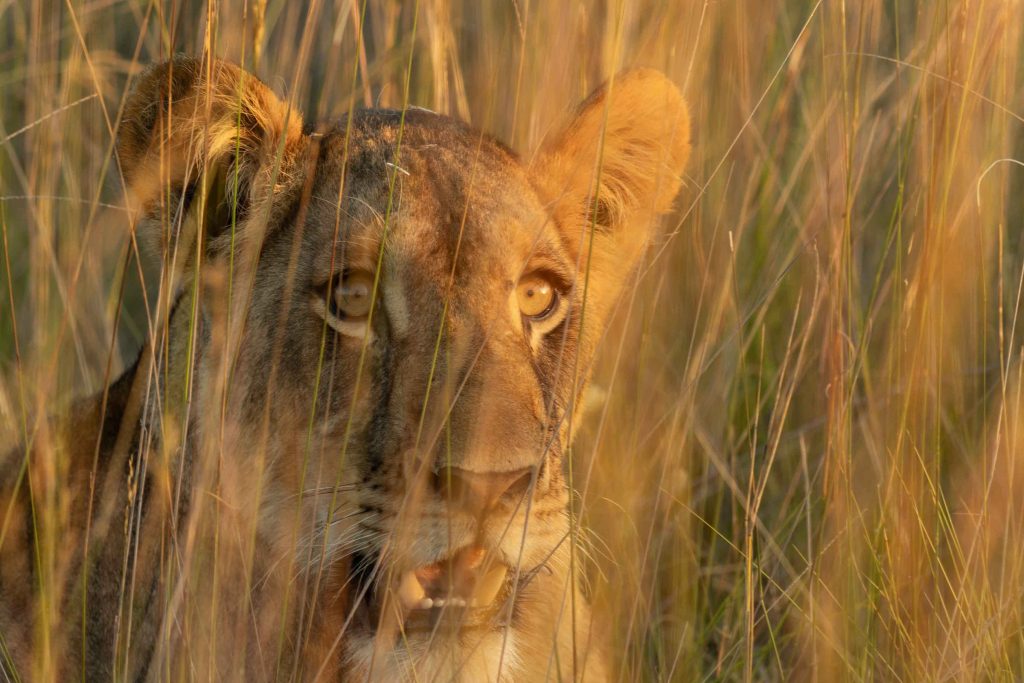
The search had taken us across vast stretches of grassland punctuated by scattered termite mounds and acacia islands. Our vehicle carved paths through grass that reached window height, creating temporary corridors that closed behind us like water. The landscape stretched infinitely in every direction, broken only by the occasional tree standing sentinel against the horizon.
When we finally found them, they were barely visible among an innocuous collection of shrubs and short trees, seeking relief from the afternoon heat in dappled light. They looked at us with thinly veiled disinterest, or maybe it was disdain—the way lions usually do, as if our presence was both expected and entirely beneath their concern. As we manoeuvred around for a better view, some cubs grew curious and wandered closer, their oversized paws silent on the earth. Her protective instincts aroused, and the mother watched us while maintaining an air of studied casualness. The lions regarded us, and we photographed them, locked in that age-old dance between predator and observer.
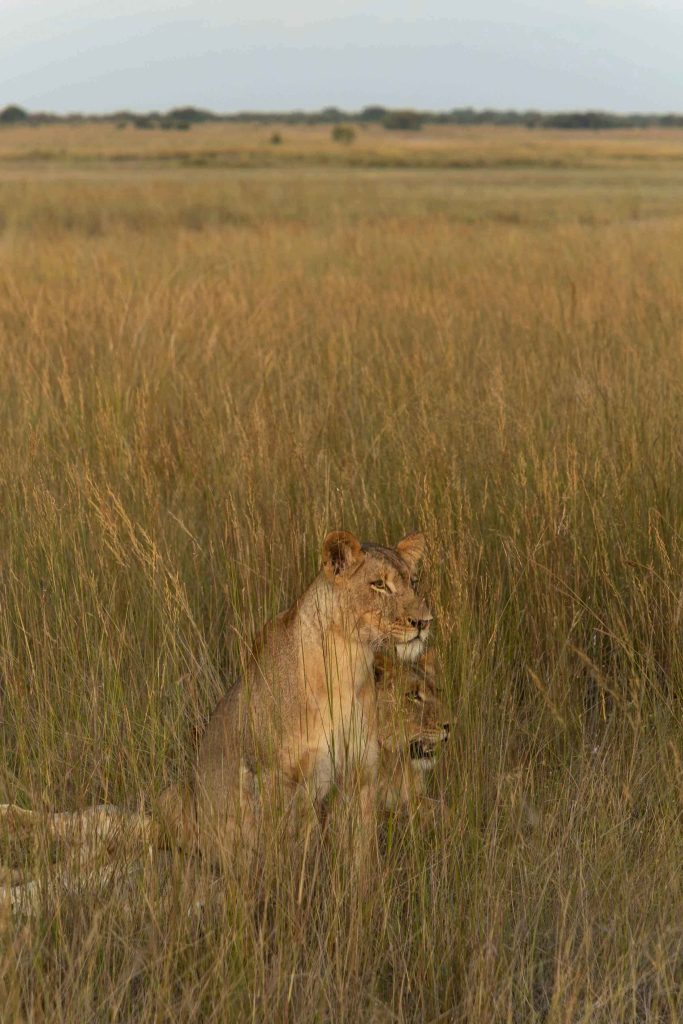
After about twenty minutes of half-curious mutual examination, the lions rose with fluid grace. It was time to search for water. The cubs played in the long grass, their golden coats blending seamlessly with the amber grass, hiding the latent power of their beings. We left them to their ancient rhythms, disappearing into their domain as silently as we had arrived.
The spotted hyenas of Liuwa are not scavengers by default—they’re apex predators here. Some clans number up to 50 individuals, making them dominant over lions in many encounters.
This more traditional, involved form of animal tracking was a welcome change from over-subscribed safari destinations, where animal locations are usually foregone conclusions and the wilderness experience has been sanitised and packaged for mass consumption. In the contrived world of safari ‘experiences’, guides work hard to leave nothing to the imagination—animal locations become prerequisites for conventional drives because there’s too much money at stake, too many expectations to manage, too many disappointed faces if the Big Five remain elusive.
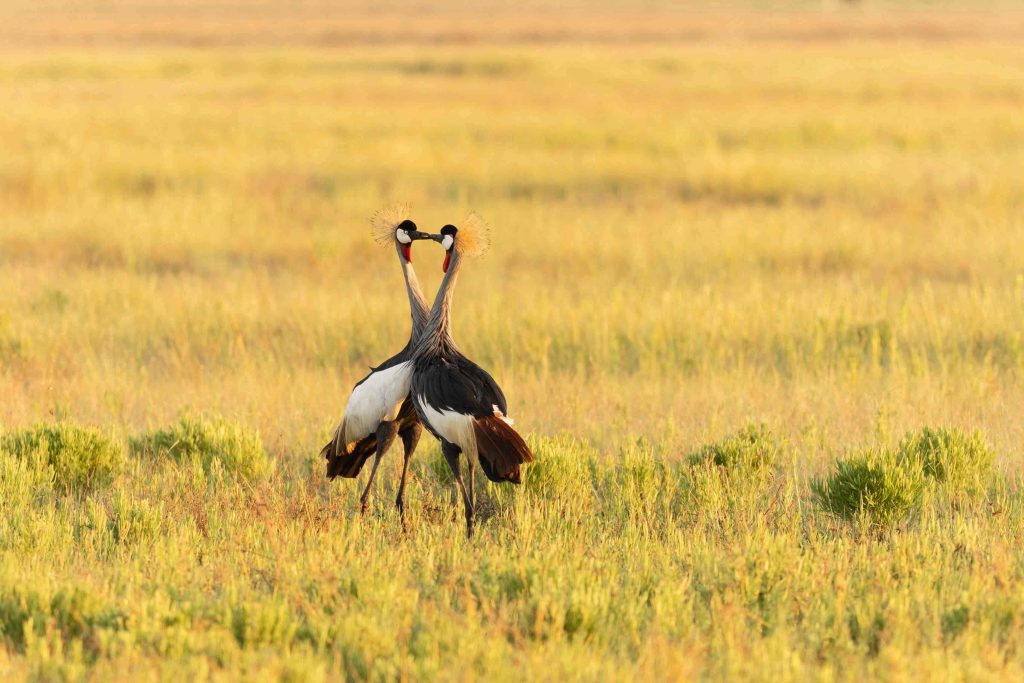
Here in Liuwa, it was a genuine delight to be alone with the landscape, the rich emptiness unspoiled by convoys of tourists piled into safari vehicles with telephoto lenses longer than a man’s arm, all vying for the perfect shot to post on social media. As far as the eye could see, we were the only human figures, our solitude complete and profound. The silence was broken only by the whisper of wind through the grass and the distant call of a fish eagle riding thermals high above.
The Liuwa Plain has earned its reputation for being gloriously remote and, by extension, relatively unspoiled—a quality that becomes increasingly precious each year as Africa’s wild spaces shrink under pressure from development. Measuring 3,369km², Liuwa forms part of the larger Barotse floodplains, which swell dramatically to almost 11,000km² at their peak, usually in April when the Zambezi River system reaches its seasonal crescendo. We visited in early May when northern sections remained completely inaccessible, cut off for long periods each year by seasonal floods that transform the landscape into a watery maze of channels and islands.
This remoteness has its own appeal, particularly for ‘overlanders’—those intrepid souls who cross continents in specially outfitted vehicles, seeking the most rugged terrain as proof of their adventurousness and dedication to authentic travel. The plains’ sheer flatness allows for the full expression of that challenge, with few areas remaining immediately accessible except during the height of floods, when the park becomes a temporary inland sea. However, this vast open expanse also offers sweeping panoramic landscape views and enables a genuine appreciation of Liuwa’s famous wildebeest migration, which is second only to the Serengeti in size and spectacle. The total wildebeest population now numbers over 45,000—a remarkable recovery from decades when poaching and habitat loss decimated their numbers.
While wildebeest provide the main attraction during migration season, scores of other life occupy these plains year-round, creating a complex web of predator-prey relationships. Lechwe antelopes, perfectly adapted to the wetland environment, roam among the dispersed herds, and alongside plains zebras whose stripes create mesmerising patterns against the golden grass. Pairs of oribi antelope stand motionless, wearing perpetually contemplative expressions before suddenly scurrying away from oncoming vehicles with surprising speed. Then there are the predators that complete this ecosystem—spotted hyenas, cheetahs, lions, wild dogs, and side-striped jackals, each occupying their particular niche in the food chain.
Birding offers another major draw for visitors, with over 350 species calling Liuwa home throughout various seasons. Many use the park as a crucial migratory stopover, while others are simply rare gems that reward patient observers. Wattled cranes, crowned cranes, and saddle-billed storks wade through seasonal pools while Secretary birds stride across the grasslands like feathered sentinels.
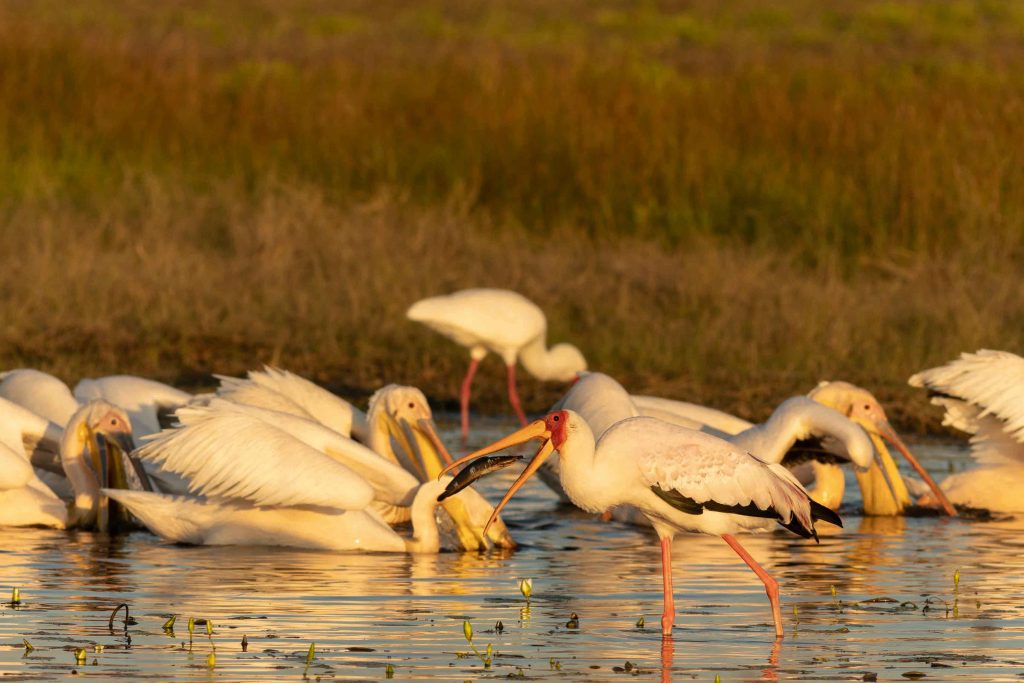
This ecosystem’s remarkable richness is neither accidental nor recent—it’s the deliberate result of Liuwa’s unique royal history, which stretches back centuries. These were the exclusive hunting grounds of the famous Barotse Litunga (literally, ‘Keeper of the Earth’) Lewanika, whose descendants form part of the Barotse Royal Establishment that continues to wield significant cultural authority today. The current Litunga remains the revered leader of the Lozi people of western Zambia, and signs of this royal heritage are scattered throughout the park like breadcrumbs from a fairy tale.
Over 45,000 blue wildebeest migrate through Liuwa annually—second only to the Serengeti in scale—but far less commercialised and a more intimate experience.
Consider the famous ‘Lone Palm’—a cluster of four palms growing on a raised mound beside a wildlife-rich pan attracting animals throughout the dry season. Local legend claims this marks the exact spot where the mighty Litunga once sprouted a palm tree through divine power, simply by placing his ivory walking stick on the ground and commanding it to grow. The more prosaic but equally fascinating explanation suggests that the palm was deliberately planted by the king’s retinue to serve as a navigational landmark, helping to orient the royal hunting party during expeditions across the ceaselessly flat expanse where one acacia grove looks much like another.
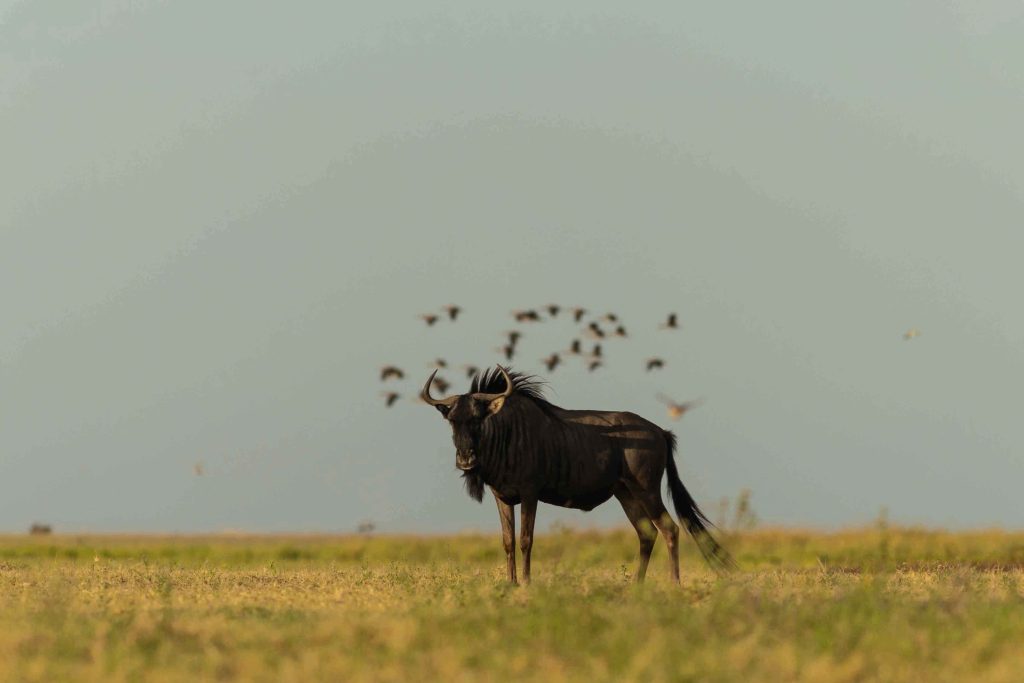
There’s also ‘King’s Pool’, a permanent water source that stays miraculously waterlogged throughout even the driest years, reserved exclusively for fishing by the royal family and their designated representatives. When we crossed the labyrinth of waterways toward the pool early one morning, mist still rising from the surface, we encountered local fishermen carefully retrieving and resetting their traditional fish traps. This practice has continued virtually unchanged for generations.
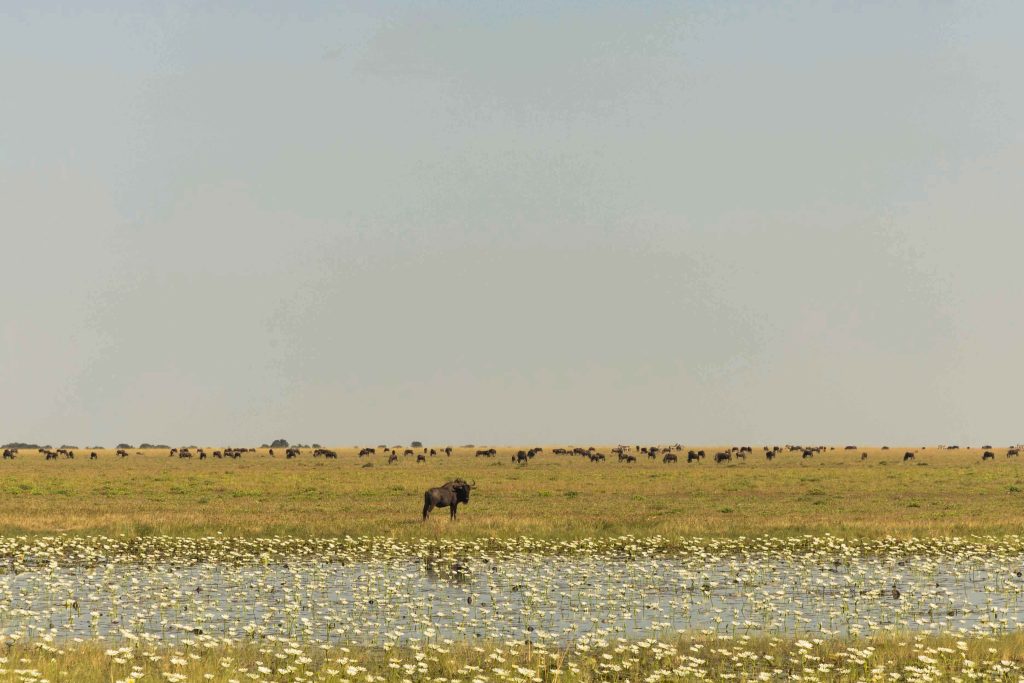
The Barotse Plains’ seasonal flooding and recession continue to mark the fundamental rhythm of life throughout this region, holding deep symbolic and practical value for the Lozi people. The annual swelling and contraction of the plains, synchronised with the lives of human inhabitants and wildlife populations, creates a poetic image of harmony between man and nature that has largely disappeared elsewhere in Africa.
Unlike many national parks that evict local populations, Liuwa is a rare example where humans and wildlife coexist, with traditional Lozi villages continuing to live sustainably inside park boundaries.
Toward the end of the 19th century, as colonial pressures mounted across the region, the forward-thinking Lewanika made a prescient decision: he declared the Lozi people ‘guardians of the plains’, effectively designating Liuwa as one of Africa’s earliest protected areas. This traditional conservation model worked remarkably well for decades, with local communities maintaining sustainable relationships with wildlife populations. In 1972, recognising the need for formal protection, the Litunga requested that the newly independent Zambian Government assume park management responsibilities, and Liuwa officially became a national park. Three decades later, in 2002, the respected conservation organisation Africa Parks took over day-to-day governance in partnership with the Department of National Parks and Wildlife and the Barotse Royal Establishment—a unique three-way collaboration honouring traditional authority and modern conservation science.
The park today balances competing desires with remarkable grace, remaining authentically rugged, genuinely out of reach, and refreshingly raw, while simultaneously developing into a sustainable tourist destination that supports local communities. For now, it maintains its blessed inaccessibility—the drive from Lusaka stretches endlessly through a landscape designed to test one’s commitment, with precious little else drawing casual visitors to Western Province’s remote reaches. Yet this very remoteness, which might seem like a disadvantage, has become Liuwa’s greatest asset.
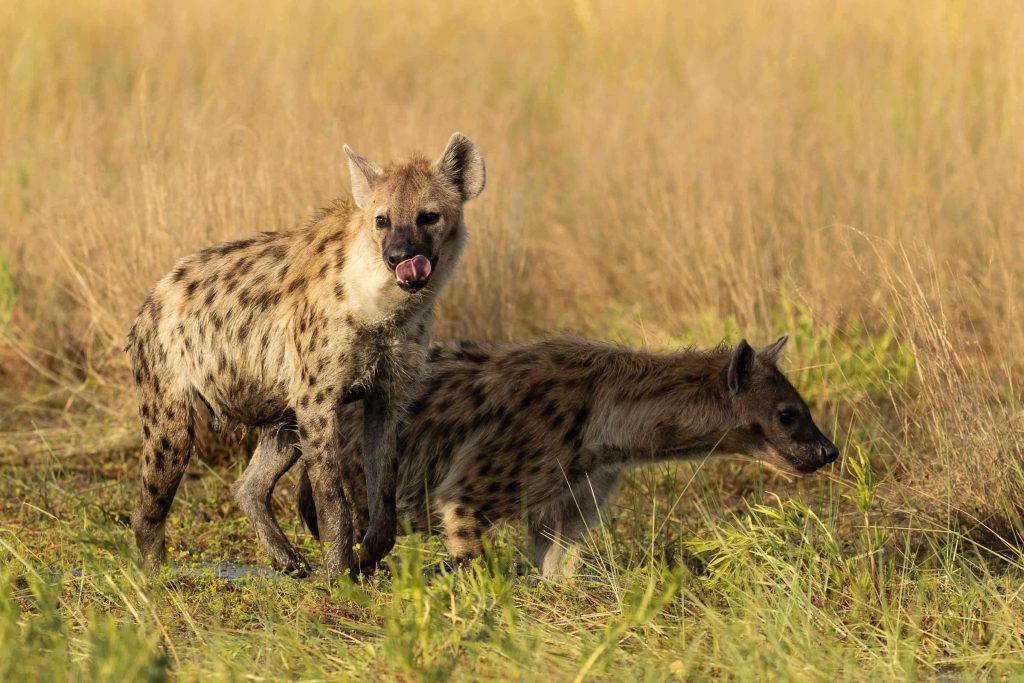
The accommodation infrastructure reflects a careful balance between authenticity and comfort. We spent our first three nights at the Katoyana campsite, which exemplified rustic charm while providing essential amenities—hot showers that felt miraculous after dusty days, an attentive camp attendant who knew precisely when to appear with tea and a traditional boma where we gathered each evening to share stories and plan the next day’s adventures. Several similar community-run campsites, most featuring self-catering chalets constructed from local materials, dot the park’s southern edge like pearls on a string. Others are strategically positioned along roads that wind through the park’s central spine, offering varied perspectives on this vast landscape.
Two lodges operate within park boundaries for visitors seeking greater comfort without sacrificing the wilderness experience: the established King Lewanika Lodge and the newer Liuwa Camp, where we spent our final evening. Modern yet understated, comfortable without being ostentatious, Liuwa Camp was enjoying only its second full season since opening when we visited. After three nights of canvas walls and camp beds, it provided welcome luxury—proper beds, gourmet meals, and thoughtful service that doesn’t intrude on the wilderness experience but certainly enhances it.
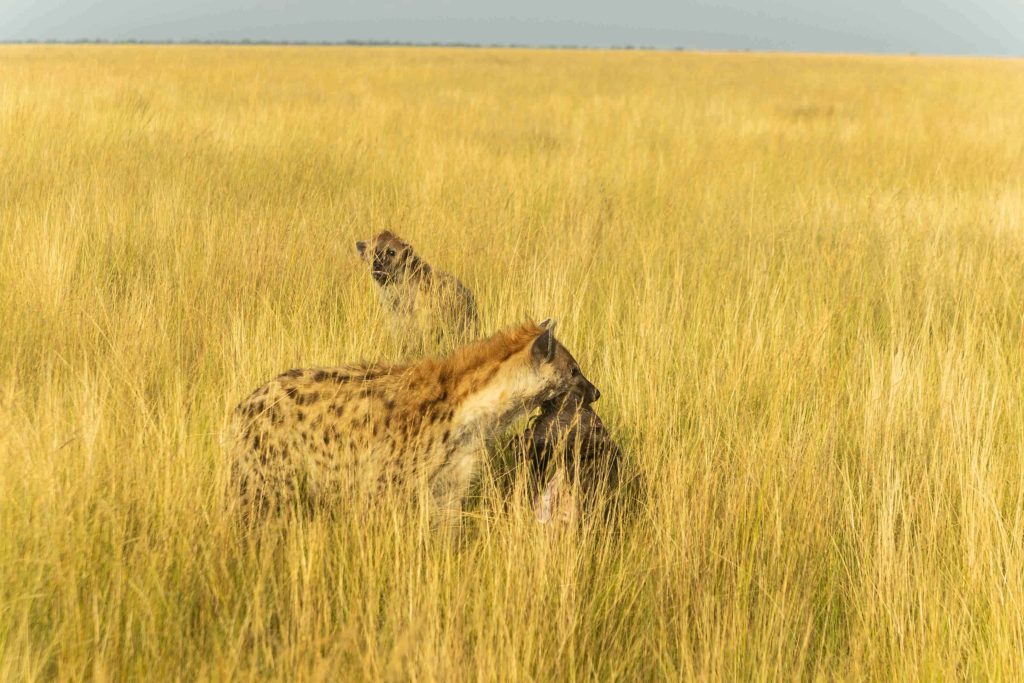
Unconventionally for an African savanna ecosystem, lions aren’t Liuwa’s apex predator—a fact that becomes apparent once you witness the impressive spotted hyenas that rule these plains. Larger and more muscular than their counterparts elsewhere in Africa, Liuwa’s hyenas don’t merely scavenge the kills of others but actively hunt with sophisticated pack coordination. We set out to track them the following morning; this time, our GPS coordinates proved more recent and reliable.
We found the pack relatively easily, their distinctive grins and alert ears poking above the tall grass like periscopes surveying their domain. One particularly large cub had somehow acquired an entire wildebeest hide, which it dragged around with evident pride while other pack members watched with what appeared to be amusement. These creatures proved remarkably playful and inquisitive, ambling toward our vehicle with unmistakable looks of intelligent curiosity rather than aggression.
African Parks’ three-way partnership model—with the Zambian government and the Barotse Royal Establishment—is now considered a template for sustainable, locally integrated conservation management.
As the pack began to disperse across the landscape, we did our best to follow their movements, but they soon demonstrated why they were such successful predators in this environment. They travelled too far, too quickly across terrain that challenged our vehicle. Eventually, we had to admit defeat, leaving them to vanish into the grass, undisturbed, untamed, and utterly in their element.
This predator-prey dynamic reflects Liuwa’s broader character as a place where natural systems still function largely as they have for millennia. As traditional guardians of the plains, approximately 12,000 Lozi people currently reside within park boundaries, living in neatly planned villages that blend seamlessly into the landscape. They continue to raise cattle using time-tested methods, fish the seasonal waterways with traditional techniques, and coax crops from the challenging, sandy soil that characterises much of the plains.
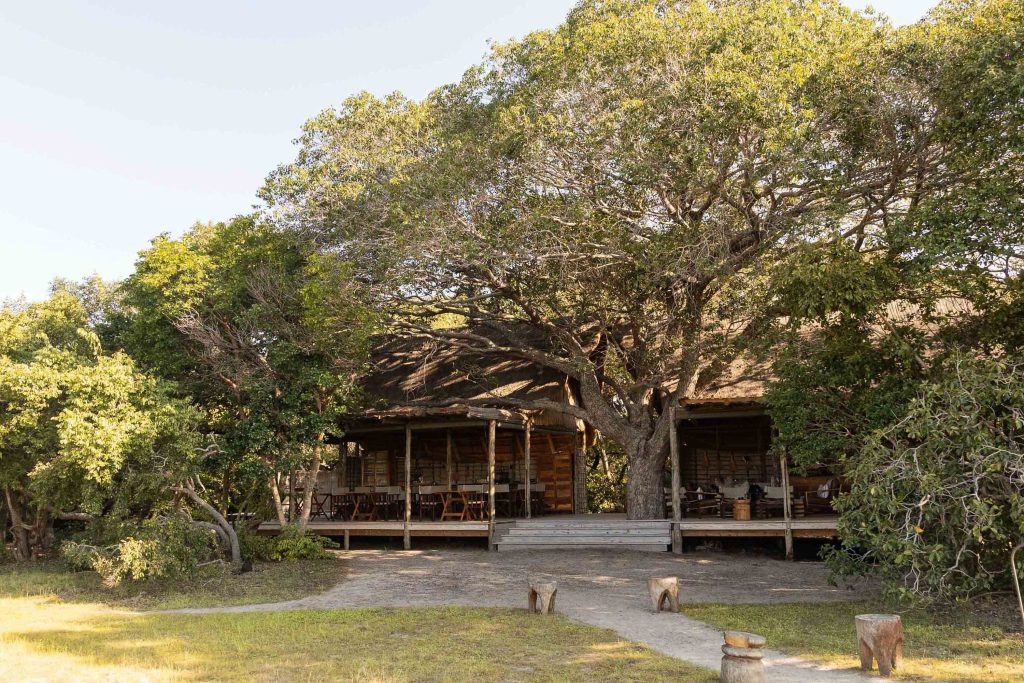
This arrangement makes Liuwa a remarkable anomaly—most protected areas exclude human communities entirely. You’d expect human-wildlife conflict, and it does occur when predators threaten livestock, but Africa Parks collaborates with traditional authorities and communities, monitoring problem animals and employing non-lethal deterrents. In an age of managed experiences, Liuwa offers something more valuable: the possibility of a genuine encounter, the authentic thrill of uncertain search, and the satisfaction of finding yourself truly alone in Africa’s wild heartlands.
The Kuomboka ceremony, is a major Lozi cultural event, marking the seasonal migration due to the flooding of the plains, is tied to the same hydrological rhythms that shape Liuwa’s ecology.



